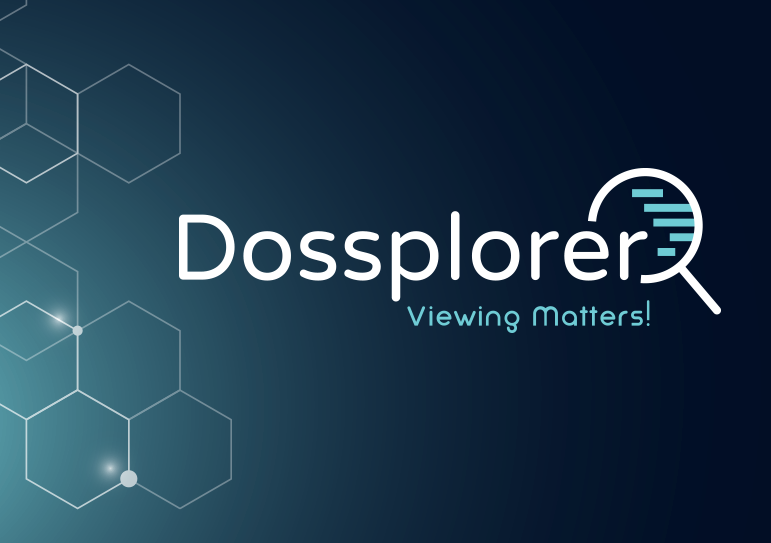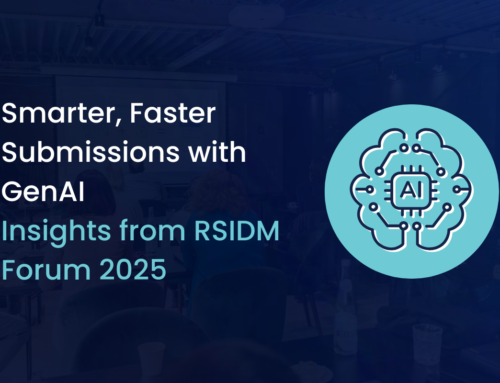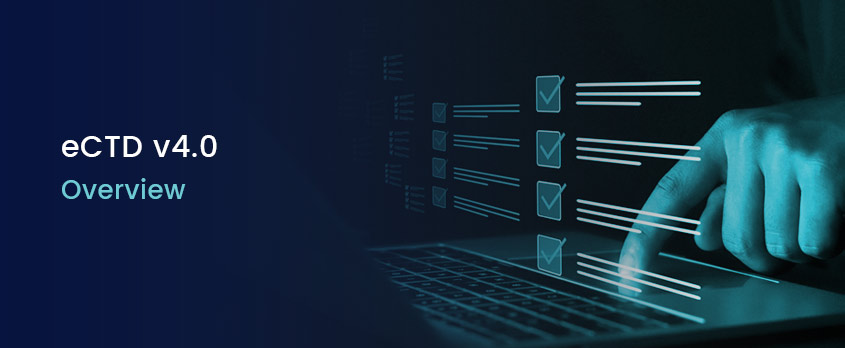
electronic Common Technical Document (eCTD) v4.0 Overview
A New Era in Regulatory Submissions
The Electronic Common Technical Document (eCTD) has been a cornerstone in the pharmaceutical industry’s regulatory submission process. With the advent of eCTD 4.0, the landscape is set to become even more streamlined and efficient. Let’s delve into what eCTD 4.0 is, its key features, and the benefits it brings to the table.
Unlock and explore the true value of your regulatory dossiers, NeeS & other regulatory dossier formats in a safe and secure, web-based eCTD viewer.
What is eCTD 4.0?
eCTD 4.0 is the latest version of the electronic submission standard used by pharmaceutical, biologics, and medical device companies to submit regulatory applications to authorities worldwide. This version is based on the Health Level Seven (HL7) standard called Regulated Product Submission (RPS), which focuses on simplifying the processing and review of regulated product information.
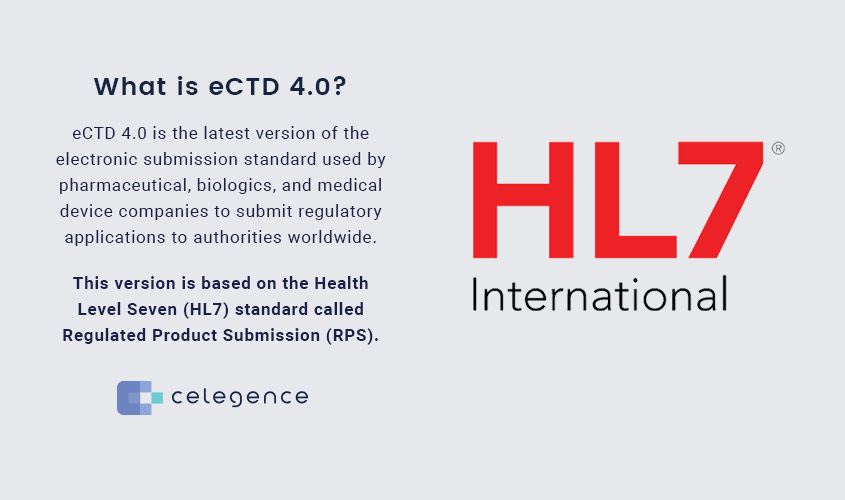
Key Features of eCTD 4.0
- Improved Efficiency: eCTD 4.0 enhances the submission process by allowing for more efficient data handling and review. This is achieved through better data structuring and the use of controlled vocabularies.
- Increased Usability: The new version offers a more user-friendly interface, making it easier for companies to compile and submit their documents. This includes improved navigation and search functionalities.
- Enhanced Compliance: eCTD 4.0 ensures better compliance with regulatory requirements by providing clear guidelines and validation criteria. This reduces the risk of submission errors and rejections.
- Forward Compatibility: One of the standout features of eCTD 4.0 is its forward compatibility with eCTD 3.2.2. This means that content from the previous version can be reused, streamlining the transition process.
Unlock and explore the true value of your regulatory dossiers, NeeS & other regulatory dossier formats in a safe and secure, web-based eCTD viewer.
eCTD 4.0 Implementation Timeline
The implementation of eCTD 4.0 is being phased in, with regulatory authorities like the FDA planning to accept new applications in this format starting in 2024.
This phased approach allows companies to gradually transition to the new system without disrupting their ongoing operations.
| Region | Technical Pilot1 | Implementation Dates2 | Implementation Documents |
| ANVISA, Brazil | 4Q 2025 (Planned) | 1Q 2026 (Production Pilot2)
2026 (Voluntary) |
TBD |
| EC, Europe | 2024 CAPs (Planned) | 2025 (Voluntary for CAPs2)
2026 (Voluntary for MRP/DCP/NP) 2027 (Mandatory for CAPs) TBC (Mandatory for MRP/DCP/NP) |
EC, Europe regional implementation page |
| FDA, United States | 2022 – 2Q 2023 (Completed) | 2024 (Voluntary)
2029 (Mandatory) |
FDA, United States regional implementation page |
| Health Canada, Canada | 2025 (Planned) | 2026 (Voluntary)
2028 (Mandatory) |
Health Canada, Canada regional implementation page |
| MFDS, Republic of Korea | TBD | 2027 (Voluntary)
TBD (Mandatory) |
TBD |
| MHLW/PMDA, Japan | 2Q 2021 (Completed) | 2022 (Voluntary)
2026 (Mandatory) |
MHLW/PMDA, Japan regional implementation page |
| Swissmedic, Switzerland | 2025 (Planned) | 2026 (Voluntary)
2029 (Mandatory) |
Swissmedic, Switzerland regional implementation page |
| TGA, Australia | 4Q 2025 (Planned) | 2026 (Voluntary)
TBD (Mandatory) |
TGA Implementation of ICH eCTD v4.0 Specification |
Source: ICH
Key Changes in eCTD 4.0
eCTD 4.0 introduces several key changes aimed at enhancing the regulatory submission process. Here are some of the most significant updates:
Key Changes in eCTD 4.0
- Single XML Message: eCTD 4.0 uses a single XML message for submissions, replacing the need for separate regional and ICH messages. This simplifies the submission process and ensures consistency1.
- Improved Lifecycle Management: The new version offers a more sophisticated lifecycle management system, allowing for better tracking and management of document versions throughout the submission process1.
- Forward Compatibility: eCTD 4.0 supports forward compatibility with eCTD 3.2.2, enabling the reuse of content from previous submissions. This streamlines the transition to the new standard2.
- Controlled Vocabularies: Introducing controlled vocabularies ensures consistency and accuracy in data representation, reducing ambiguities and improving data quality.
- Enhanced Metadata: eCTD 4.0 includes more detailed metadata, which helps better categorize and retrieve submission documents1.
- Two-Way Communication: Although not implemented initially in all regions, eCTD 4.0 aims to facilitate two-way communication between regulatory authorities and sponsors, improving the overall submission and review process.
- Global Harmonization: The new version promotes global harmonization of the submission format, making it easier for companies to submit applications to multiple regulatory authorities.
These changes make eCTD 4.0 a significant advancement in the regulatory submission process, offering numerous benefits to both regulatory authorities and sponsors.
Benefits of eCTD 4.0
- Speed and Flexibility: The new version allows for faster submission and review times, significantly reducing the time to market for new products.
- Better Communication: eCTD 4.0 facilitates improved communication between regulatory agencies and sponsors, ensuring that all parties are on the same page throughout the submission process.
- Cost Savings: eCTD 4.0 can lead to substantial cost savings for companies by reducing the complexity and time required for submissions.
- Efficiency: The streamlined submission process and improved lifecycle management reduce the time and effort required for regulatory submissions.
- Accuracy: Controlled vocabularies and enhanced metadata improve the accuracy and quality of submissions.
- Flexibility: Forward compatibility and global harmonization provide greater flexibility for companies operating in multiple regions.
- Enhanced Data Management: All content (eCTD Modules 1-5) is included in a single, unified exchange message using an XML file, simplifying data organization and improving consistency.
- Content Reusability: Previously submitted documents can be referenced and reused across different submissions and regulatory activities, saving time and effort.
- Compatibility: The content from the previous version can be reused, streamlining the transition process.
- Adaptability: Additional document metadata can be included to meet specific regional processing needs.
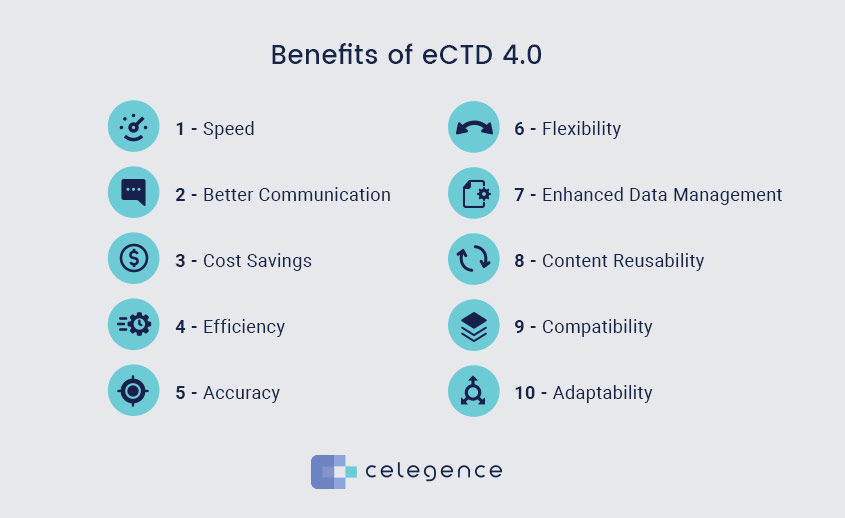
Challenges in Transitioning to eCTD 4.0.
Transitioning to eCTD 4.0 comes with several challenges that organizations must address to ensure a smooth implementation. Here are some of the key challenges:
- Training and Skill Development: The new features and improvements in eCTD 4.0 can be complex, requiring extensive training for regulatory staff. This can be both costly and time-consuming.
- Infrastructure Upgrades: Organizations must ensure their existing infrastructure is compatible with eCTD 4.0. This includes upgrading software and hardware, which can be a significant investment.
- Template and Software Changes: eCTD 4.0 submissions cannot be compiled using previous versions of eCTD templates. This necessitates the adoption of new templates and software, adding to the transition complexity.
- Technical Issues: The new format uses complex XML coding, making manual editing difficult. Specialized tools are needed to manage document lifecycles effectively.
- Awareness and Acceptance: There may be a lack of awareness and understanding of eCTD 4.0 among regulatory staff and stakeholders, making it challenging to get everyone on board with the transition.
- Regional Differences: Variations in eCTD 4.0 implementation across regions can add another layer of complexity. Differences in submission structures, metadata, and other regional requirements must be managed carefully.
Despite these challenges, organizations can successfully transition to eCTD 4.0 and reap its benefits with proper planning, training, and investment.
Unlock and explore the true value of your regulatory dossiers, NeeS & other regulatory dossier formats in a safe and secure, web-based eCTD viewer.
The Implementation Best Practices for eCTD 4.0.
The people, strategies, processes and technologies involved play a role in the success of eCTD 4.0. To adequately prepare for the implementation, and eCTD submissions organizations should follow specific best practices:
Perform Early Assessments: Teams should conduct a full evaluation of current regulatory compliance systems, processes and documentation to streamline global submission workflows.
Regulatory Intelligence: Consistent review of regulatory agencies’ websites and attendance at industry events are essential for remaining current with shifting standards.
Training and Skill Development: The members of the regulatory team must be trained in all eCTD 4.0 terminology, concepts and new submission processes.
Standardize Data: Leveraging standardized, user-defined metadata and vocabulary will help teams to maintain accuracy and consistency within submissions.
Systems and Software: eCTD publishing tools, submission tracking and document management systems must be compatible with and support eCTD 4.0 requirements.
Interaction with Regulatory Bodies: Actively engage with regulatory agencies, participate in workshops and seek guidance for questions or concerns.
Continuously Improve: Consistently assess and improve training programs, document templates and submission processes based on feedback received, lessons learned and industry best practices.
Readiness Check: Through engagement with technical pilots or small-scale sample submissions, organizations can assess conformance and readiness for adoption.
Documentation: Documentation must be current and thorough throughout the transition.

eCTD v4.0 Conclusions
eCTD 4.0 represents a significant leap forward in the regulatory submission process. Its improved efficiency, usability, and compliance features make it a valuable tool for companies looking to streamline their submissions and bring products to market more quickly. As the industry moves towards full implementation, eCTD 4.0 is set to become the new standard for regulatory submissions.
